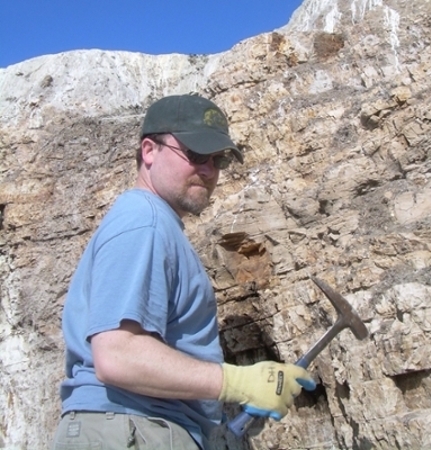
David Haasl
- Email: dhaasl@csuchico.edu
- Phone: 530-898-5262
Research Interests:
- Undergraduate geology and earth science education
- Paleontological mitigation
- Diversity and evolution of Cenozoic marine gastropods
CURE-E Course: Physical Geology (ERTH 102), first introduced with CURE-E Fall 2022
Project Title: Incidents of Naturally Occurring Asbestos Materials in Sediments
Asbestos refers to six minerals, five from the amphibole group and one from the serpentine group, which can exhibit a fibrous (asbestiform) crystal shape. Asbestos is widely familiar as a construction material, now banned in many countries, but it occurs naturally in certain rock types and must be mined and processed in order to be useful for industrial purposes. The health hazards presented by industrial asbestos are widely known; it has been linked to certain types of cancer, including mesothelioma. However, there is increasing awareness of the potential health hazards posed by naturally-occurring asbestos (NOA) when those minerals are powdered, through construction or other human activities, and inhaled.
NOA minerals are usually associated with serpentinite and various types of metamorphic rocks. In northern California, these rock types are exposed at the surface in many places in the Klamath Mountains and Sierra Nevada. In fact, serpentinite, one of the NOA-producing rocks, is the California state rock due it is commonness in many parts of the state. In the Butte County area, serpentinite and other NOA-producing rock types may be found in the Sierran foothills just east of the City of Chico. These rocks are the product of tectonic plate collisions that occurred more than 150 million years ago. Weathering and erosion break these rocks down into smaller pieces of sediment and streams, draining the foothills, carry these sediments, including any NOA, down slope to the valley. This means that the sediments found in watersheds in the foothills, or along streams that flow down to the valley floor probably contain NOA, if serpentinite or other NOA-producing rocks are found in the upper watersheds. NOA in these sediments has potential health implications if disturbed by human activities.
Most of the previous research has focused on the relationship between industrial asbestos and human health. Recent students, however, have recognized the potential hazard posed by NOA. Outcrops of NOA-producing rocks may be found on many geologic maps but these maps tell us little or nothing about the distribution of NOA in sediments derived from these outcrops. Environmental agencies, such as the Butte County Air Quality Board, are interested in where NOA can be found in the local area.


